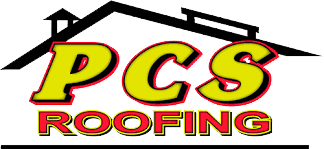The Advantages and Disadvantages of Metal Roofs
Are you thinking about installing a metal roof on your home? That’s not surprising: metal roofs have become increasingly popular over the last several years. It’s now the second most commonly used roofing material after traditional asphalt shingles. The industry is growing, and that growth is only projected to continue. But how can you know if it’s the right option for you? To help you decide, we’ve created a list of some of the advantages and disadvantages of metal roofs.
Advantages
Long-lasting: Metal roofs have a long lifespan and can generally last anywhere from 40 to 70 years. Contrast this with traditional asphalt shingles, which last only 12 to 20 years on average. They often come with a 30- to 50-year manufacturer’s warranty.
Durable: The longevity of metal roofs is due in large part to their sturdiness. Many types can withstand winds of up to 140 miles per hour. This material is also unlikely to corrode or crack because of rust-proof coatings. Moreover, this material isn’t flammable. This feature makes them a particularly attractive option in areas that have a higher risk of wildfires.
Energy-efficient: Whereas traditional asphalt shingles absorb solar heat, metal roofs reflect it. Some come with an additional reflective coating, which further limits heat absorption. Consequently, this can end up saving you anywhere between 10% and 25% on cooling costs.
Green: Metal roofs are also incredibly environmentally friendly. Different types of can consist of anywhere between 25% and 95% recycled material, and all metal roofs are 100% recyclable. Traditional asphalt shingles are much less eco-friendly, generating up to 20 billion pounds of waste a year. They’re also a petroleum product, meaning they rely on fossil fuels.
Disadvantages
Initial costs: Metal roofing is 2-3 times more expensive than other materials. However, if these initial costs aren’t financially prohibitive, it will most likely end up costing you less long term. That’s because they require less upkeep than other materials, which minimizes maintenance expenses.
Volume: Metal roofs can be quite loud in rain and hail storms. Professional insulation usually solves this problem, though having it installed will further increase your initial costs.
Coloring: Over time, some metal roofs will start to lose their color or become stained. Down the road, you might not be able to find an exact color match to replace these sections. This problem might also arise if you need to make other repairs or decide to add an extension to your home.
Functioning: Improperly installed metal roofs can have severe consequences. Always contact a professional roofing company about installing your roof. Large panels will expand and contract and can loosen unless fasteners are used that can accommodate this. Poor installation can also lead to water accumulation, which can result in significant damage. Being near saltwater can cause metal roofs to corrode also local climate can cause damage. 1500 Feet from a saltwater body is all recommended. But check your warranty to be on the safe side. Most will stipulate what they consider to be an acceptable distance.
The Advantages and Disadvantages of Metal Roofs. Article by: Jake W. of SEO After Coffee. Plagiarism checked June 27, 2020. Written for P.C.S. Roofing, Simpsonville SC. All Rights Reserved.
